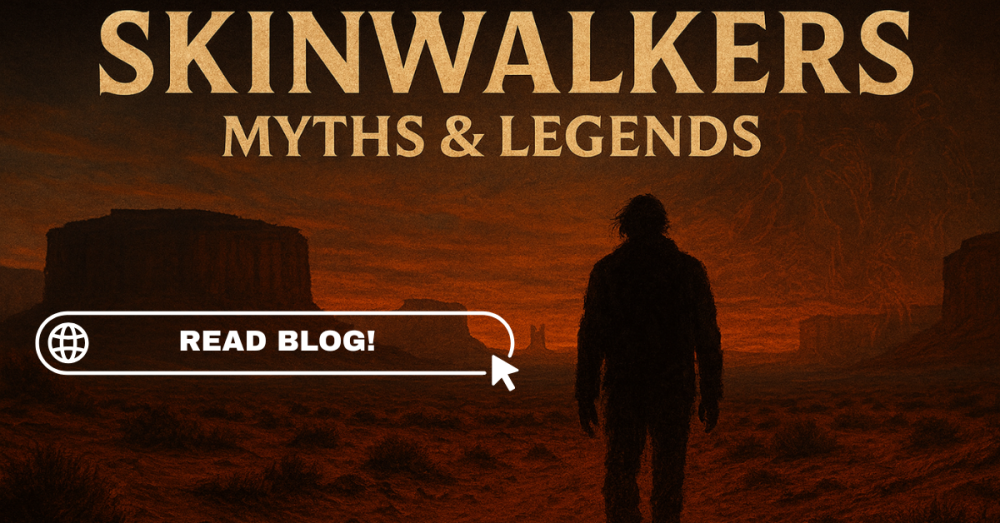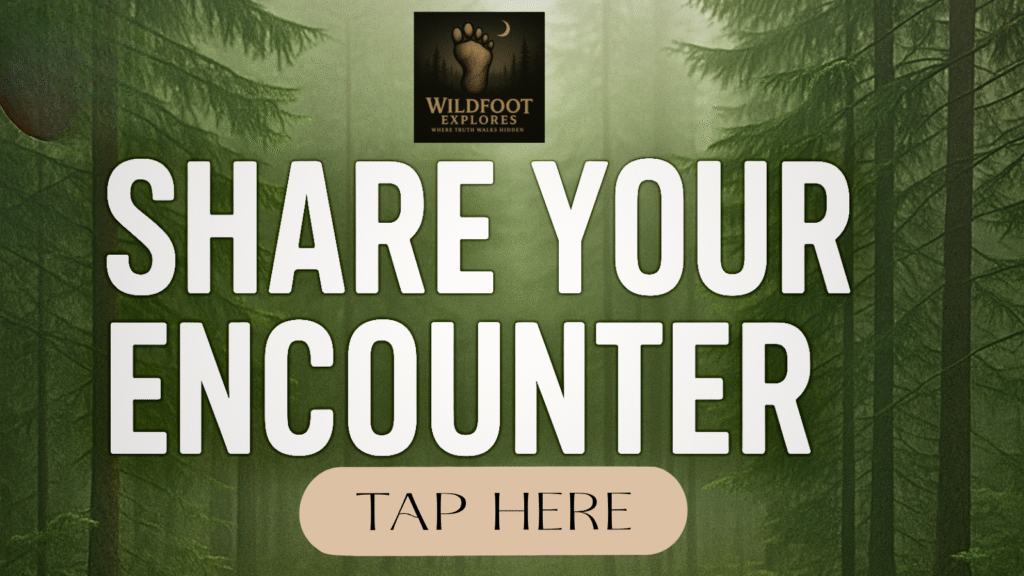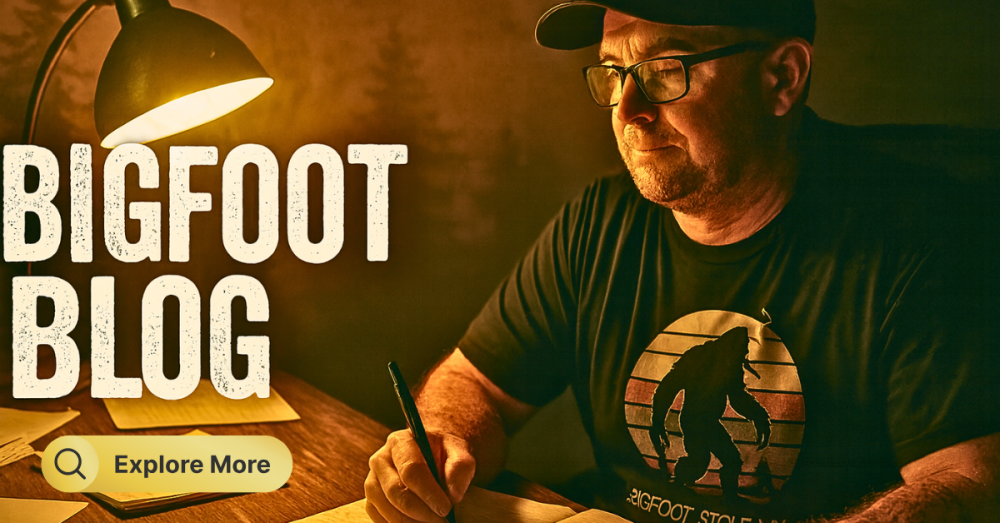
Creepy desert banner with skull and lightning exploring Navajo Skinwalker myths and ancient legends.”
What Are Skinwalkers? Navajo Lore, Myths & Truths goes far beyond campfire stories. It’s a living thread woven through Diné storytelling a reflection of cultural identity, ancestral law, and lessons about the balance between nature and power.
Before we get into the full blog, here’s what people are asking about Skinwalkers and why these ancient stories still hold such power today.
Below, we’ll explore what these legends mean, how they’ve evolved, and why they continue to stir both fascination and fear across generations.
People Also Ask
Q1: Are Skinwalkers real according to Navajo belief?
In traditional Navajo belief, Skinwalkers are considered very real and deeply feared witches who misuse spiritual power, often described as transforming into animals.
Q2: What does “Skinwalker” mean in Navajo?
It’s commonly tied to yee naaldlooshii“with it, he goes on all fours” a reference to a witch who can shift forms.
Q3: Is Skinwalker Ranch part of Navajo Skinwalker lore?
Skinwalker Ranch (Utah) is famous for unexplained phenomena. While Navajo Skinwalker teachings come from Diné tradition (Arizona/New Mexico), people often connect the ranch’s activity to wider “Skinwalker” conversations.
Q4: Where can I learn more about Skinwalkers and Navajo mythology?
See the curated book list near the end of this post for culturally grounded fiction and investigations.
- People Also Ask
- Wildfoot Disclosure and Invitation
- Navajo Lore and Cultural Roots
- Skinwalkers: Legends and Realities
- Contemporary Interpretations and Media Representations
- Personal Accounts and Firsthand Experiences
- The Cultural Significance of Skinwalker Stories
- Explore the Legends Through These Books
- Maintaining Respect: A Guide to Engaging with Navajo Lore

Wildfoot Disclosure and Invitation
As an Amazon Associate I earn from qualifying purchases.
Some of the links in my blog posts are affiliate links to Amazon. This means I may earn a small commission if you decide to make a purchase, at no extra cost to you. These links are here to explore freely, with no pressure or obligation.
My blogs cover everything from Bigfoot theories and paranormal research to survival tips and personal stories. When I mention a book, tool, or piece of gear, it’s because I believe in it, use it, or have taken time to research it thoroughly.
You’ll also see connections to my other platforms, including TrailForge Gear and Paranormal Curiosities Realm all part of the same mission: to explore the unexplained and share what I find.
Thanks for reading, sharing, and supporting independent storytelling.
Shawn Thomas
Author & Creator of The Hidden Bloodlines of Bigfoot
Founder of Wildfoot Explores
Navajo Lore and Cultural Roots

“Navajo elder wrapped in a blanket watching sunrise over Monument Valley honoring Diné culture and tradition.”
Navajo culture offers a rich tapestry of oral traditions that have been passed down through generations. These tales aren’t just stories; they define the worldview of a people deeply connected to their surroundings. The Navajo, or Diné as they call themselves, have a unique way of looking at the world that blends storytelling with daily life.
The historical background of Navajo lore is a journey in itself. It reveals how ancestral wisdom and beliefs shape modern practices and identity. Not just a reflection of fantasy, but a roadmap of lessons from the past. History shows us how the tales are woven into the everyday lives of this vibrant community.
‘Diné’ isn’t just a name; it represents a profound connection to the land. The people and the land are intertwined in a bond that defies simplistic explanations. Their stories, steeped in tradition, convey this vital link that sustains identity and spirituality.
Mythology shapes cultural identity, acting as the backbone for rituals, ceremonies, and moral values. For the Navajo, these myths are not only stories but living traditions that ensure continuity and community through shared beliefs and experiences.
Storytelling isn’t just about entertainment; it’s a vehicle for wisdom. In Navajo tradition, stories are crucial for passing down knowledge, preserving cultural identity, and maintaining the moral compass of the community. Without these stories, a vital part of what makes Navajo society resilient and vibrant could be lost.
Skinwalkers: Legends and Realities

“Skinwalker figure under full moon beside a deer representing Navajo myths of transformation and power.”
Skinwalkers, a chilling aspect of Navajo lore, are wrapped in enigma and intrigue. Defined by the Navajo as witches with the ability to transform into animals, they embody a fascinating blend of fear and mystery. These beings aren’t just the stuff of nightmares; they’re integral to understanding how Navajo culture explains the unexplainable.
Teasing apart myth from reality, Skinwalker legends highlight themes of power and transformation. In Navajo storytelling, these entities are not just malevolent forces but cautionary tales warning against the misuse of spiritual powers. They serve as reminders of the respect one must have for nature and the balance that sustains life.
In these stories, certain traits often stand out like cunning intelligence and a disarming human-like presence even in animal form. Imagine a creature that walks with a hint of humanity, the gait not quite right it’s a visual that lingers hauntingly in the mind.
The archetype of the trickster is a recurring figure in Native American stories, and Skinwalkers fit this mold with eerie perfection. They challenge norms, represent chaos, but also teach important life lessons through their unpredictable and often terrifying antics.
Even today, Skinwalker stories hold a place in Navajo society, reflecting ongoing struggles and cultural tensions. These legends aren’t merely folklore they express real fears and cultural reflections, serving as a medium to discuss social issues in a framework that respects traditional beliefs.
Contemporary Interpretations and Media Representations
Skinwalkers have crossed over into modern imagination, fueled by platforms like YouTube and creepypasta. These stories have found new life, captivating audiences with their eerie charm and mysterious allure. From animated shorts to chilling narrations, these tales of transformation have found their place in the digital age.
Social media has a knack for retelling stories with a modern twist, sometimes drifting far from their roots. This change isn’t just about adding drama, it alters the story’s impact and meaning, often leaving the authenticity of cultural narratives on shaky ground.

Laptop shows eerie Skinwalker video with caption ‘They weren’t walking right…’ modern retelling of Navajo legend.”
Take the phrase “They weren’t walking right…” it’s more than just words; it’s an enduring mystery. In videos, it conveys terror and intrigue, capturing that unsettling feeling of witnessing something beyond our understanding. This phrase fuels the mystery, becoming a tagline for countless short videos and discussions.
Firsthand encounters, often sensationalized, have an uncanny ability to boost the Skinwalker narrative, drawing in curious audiences eager for a thrill. These clips often gain traction, heightening the stories’ impact beyond traditional boundaries.
While these portrayals attract attention, they may not always perfectly mirror Navajo beliefs. The challenge lies in preserving cultural authenticity while still crafting stories that captivate contemporary audiences. It’s about striking a balance keeping the legend alive without losing sight of its roots.
Personal Accounts and Firsthand Experiences
Compelling firsthand encounters often add a layer of authenticity to Skinwalker tales for audiences eager for chills. Accounts from those living close to Navajo reservations or venturing into the desert tell stories that bridge folklore with real life.
People recount chilling experiences that usually involve a spine-tingling phrase: “They weren’t walking right…” These words alone conjure images of unsettling scenes where things seem just off enough to unnerve even a seasoned skeptic.
Stories from explorers or locals detail peculiar sightings and odd happenings. The landscape of the American Southwest, with its vast, enigmatic desert terrain, serves as a perfect backdrop for these ominous tales.
The influence of these narratives extends beyond just fear they provoke curiosity about cultures tied deeply to the land. Personal stories, whether firsthand or passed down through generations, offer a unique insight into how deeply these tales shape cultural consciousness.
Exploring these narratives reveals a lot about belief systems and the dynamics of fear. They reflect inherent anxieties and societal tensions while also showcasing the overwhelming power of storytelling across time and geography.

“UFO beams light onto Bigfoot in forest exploring connections between Bigfoot, Skinwalkers, and Wendigo.”
The Cultural Significance of Skinwalker Stories
Skinwalker stories hold a special meaning within the Navajo community, intertwining traditional values with contemporary lessons. These tales go beyond serving as simple folklore they act as vital threads in the cultural tapestry that binds the community together.
At the heart of these stories lie important themes like morality, community, and the power of fear. They delve into the complexities of human behavior, highlighting the consequences of straying from societal norms. In this sense, they’re more than stories they’re life lessons wrapped in mystery and caution.
In preserving cultural memory, Skinwalker tales play an indispensable role. They’re platforms for passing down wisdom and reinforcing community bonds, ensuring that new generations understand and appreciate the rich traditions they inherit.
When we compare Skinwalker tales to other supernatural entities from various cultures, similarities in moral lessons and the sense of wonder become apparent. Despite cultural differences, these tales often echo universal themes of right, wrong, and the unpredictable forces that lie beyond our understanding.
Beneath the thrilling narratives of fearsome creatures, deeper messages about respect for nature, community values, and personal integrity can be found. These stories serve as reminders to uphold the delicate balance between mankind and the natural world a balance as relevant today as it’s ever been.
Explore the Legends Through These Books
If you’re ready to dive deeper into the history, mystery, and firsthand accounts surrounding Skinwalkers and Navajo lore, here are several must-read titles worth exploring:
Skinwalkers: A Leaphorn and Chee Novel by Tony Hillerman
A classic mystery blending Navajo detective work with ancient folklore. Hillerman’s storytelling captures the tension between modern investigation and the old ways of the Diné, immersing readers in an authentic Southwest setting.
➡️ Available on Amazon.
Hunt for the Skinwalker by Colm A. Kelleher, Ph.D. & George Knapp
A groundbreaking nonfiction account of real events at Skinwalker Ranch one of America’s most infamous paranormal hotspots. This book mixes science, eyewitness testimony, and government research into an unforgettable exploration of the unknown.
➡️ Available on Amazon.
Skinwalker Ranch: No Trespassing by Ryan Skinner & D.L. Wallace
Part memoir, part investigation, this book dives into years of bizarre encounters on the Skinwalker Ranch. From orbs and portals to encounters with entities beyond comprehension, it’s an essential read for anyone drawn to the darker side of the unexplained.
➡️ Available on Amazon.
Want more? Explore The Wildfoot Library for real encounters, folklore, and theories connecting Skinwalkers, Bigfoot, and the unseen world that surrounds us.

Cinematic desert artwork showing a lone figure standing beneath a fiery sunset surrounded by towering mesas, with the title ‘Skinwalkers: Myths & Legends’ displayed above. The image evokes Navajo folklore and mystery, symbolizing the legends explored in the Wildfoot Explores blog.
Maintaining Respect: A Guide to Engaging with Navajo Lore
Understanding cultural sensitivity is key when diving into Navajo lore. It’s crucial to approach these stories with respect and an open mind, recognizing their significance to the Navajo community beyond entertainment.
When discussing and sharing Navajo stories, balance curiosity with responsibility. Remember, these tales aren’t just spooky narratives they’re intertwined with Navajo identity and heritage.
Navigating the fine line between inspiration and appropriation is essential. Acknowledge the origins and respect the narratives as they were intended to be shared by the community.
Engaging with Indigenous sources offers a broader and more authentic view. Seek out Navajo voices and perspectives to gain genuine insights into their rich storytelling traditions.
While exploring these stories, consider supporting initiatives that promote Navajo cultural education and preservation. This doesn’t just safeguard the tales it supports the community’s ongoing efforts to uphold their traditions.
By engaging with Navajo lore thoughtfully and respectfully, we can all help preserve the integrity and richness of these stories, ensuring they remain vibrant and honored for generations to come.


